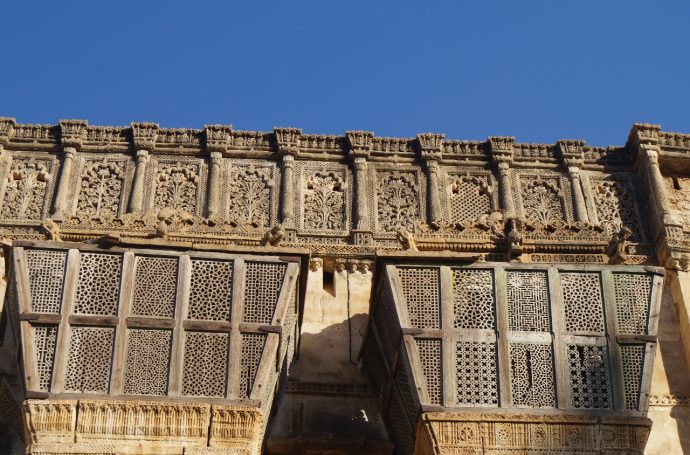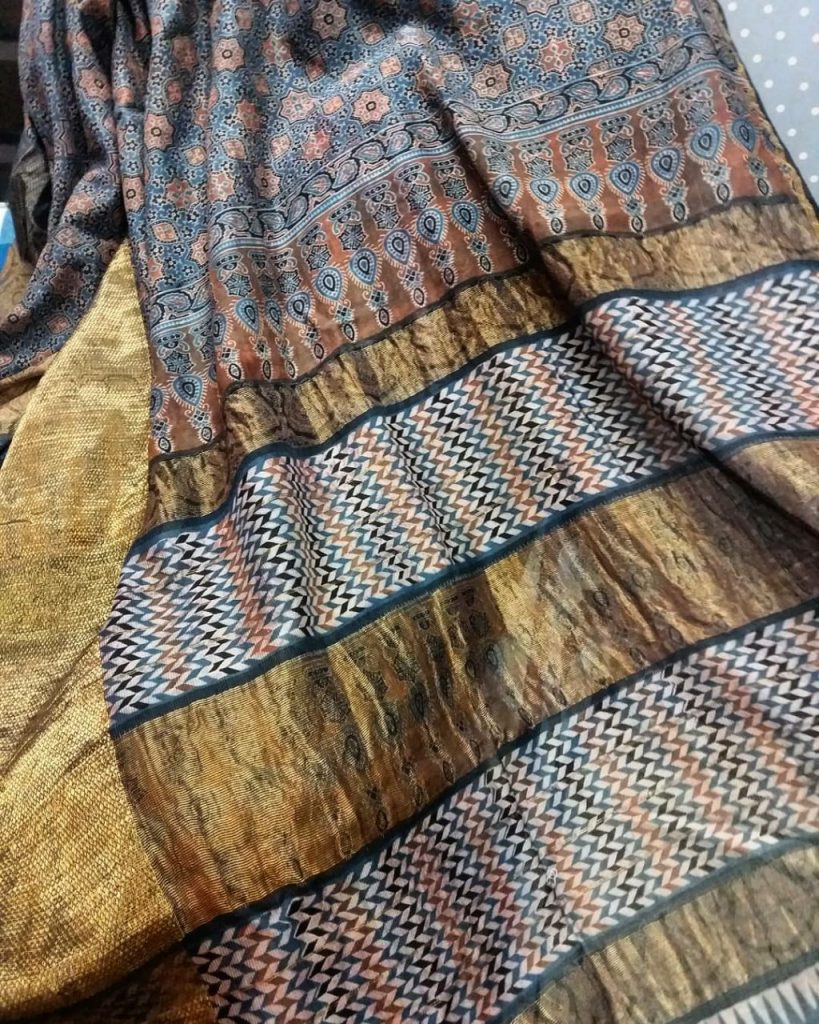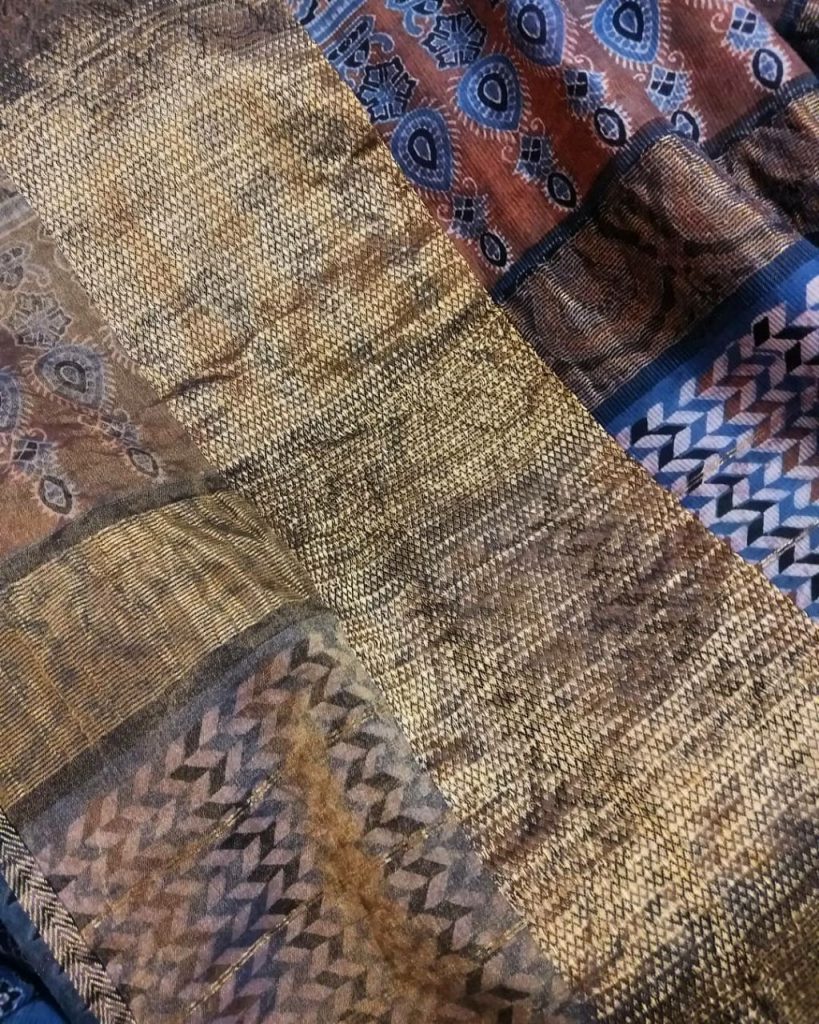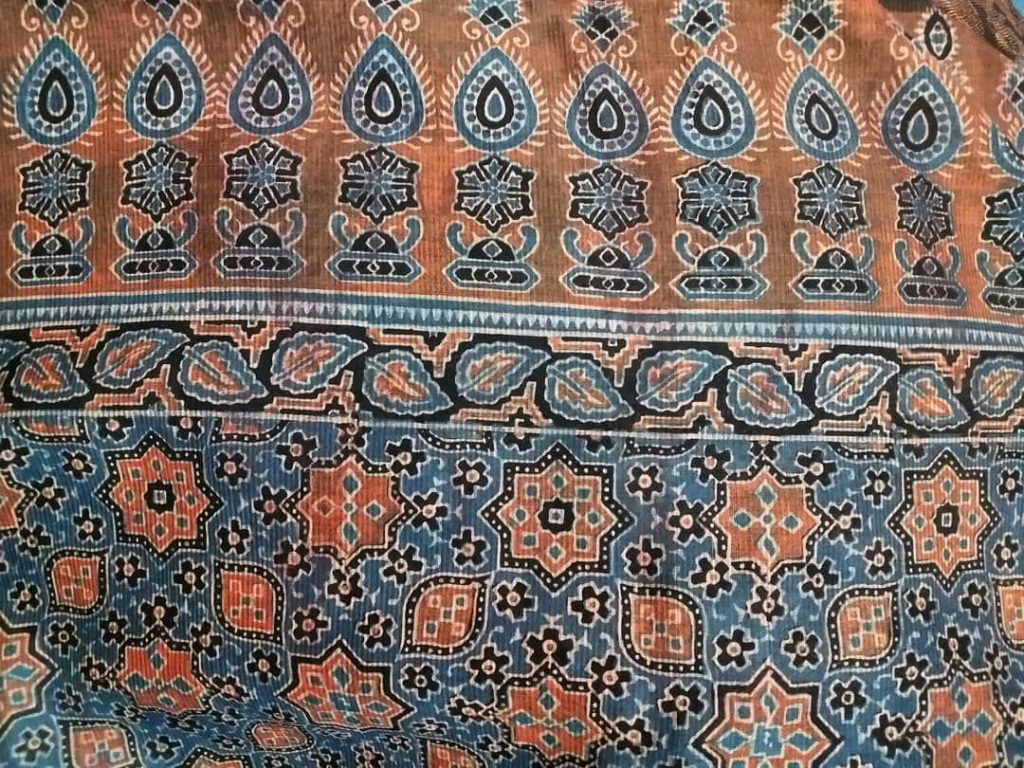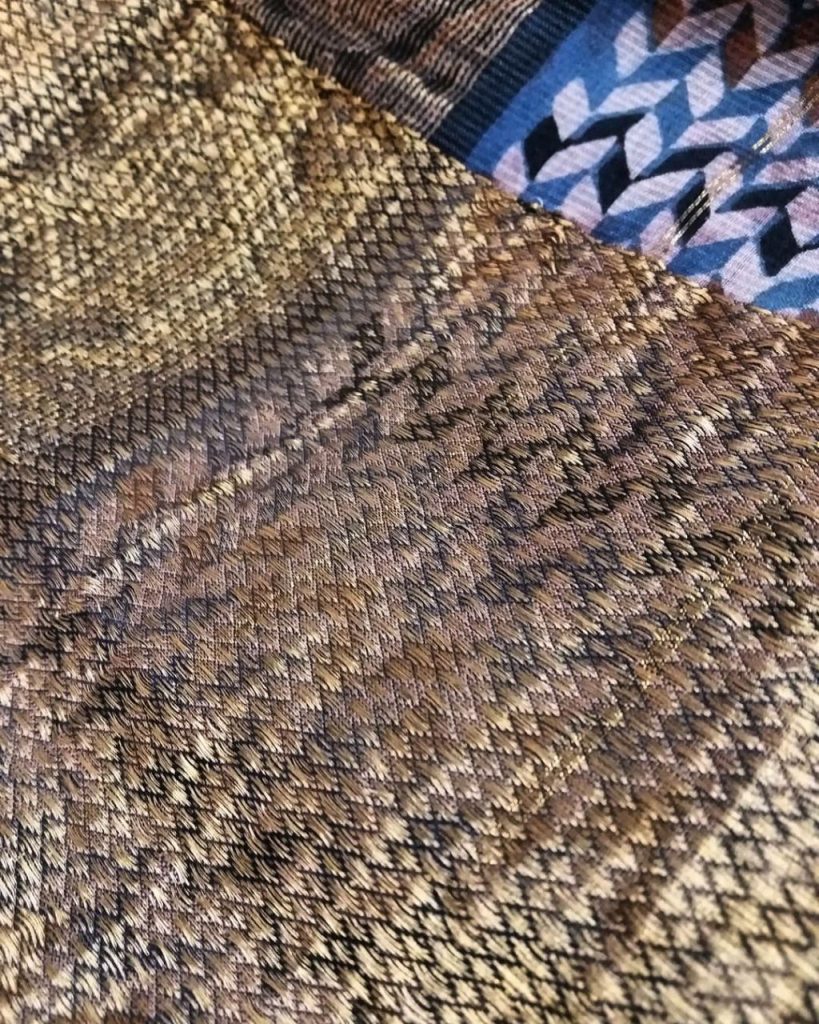Aina Mahal, Bhuj. A breathtaking picture of ruins in restoration, these stunningly hand carved trefoil lattices are one face of the palace complex that survived the ravages of the earthquake and represent rich intricate geometric patterns adorning the viewing galleries – a signature of islamic architecture of the time. These patterns, when observed closely, will resonate with a viewer familiar with Ajrak, and this indeed is one of the inspirations behind the motifs and print repeats of the traditional form of hand block and mud resist printing. As I learnt from the master craftsmen themselves, architectural patterns and the starry night sky with its constellations, as well as simple shapes such as that of an almond, or the geometric representation of a pomegranate, influenced the motif development and cemented the traditional patterns that carried on for generations of Ajrak printing.
My first saree of the 100 saree pact is a special find I picked up from the humble abode and beautiful workshop of artisan designer Mr Soyab Khatri at Ajrakhpur. You too can visit him or buy from him online by going here! This cotton silk blend is a southern weave hand printed with the Ajrak technique indigenous to the western Indian desert, and I loved it for the beautiful visual effect created by extending the print to the tissue gold region on the border. A golden weft creates a beautiful depth and sheen, and woven geometric patterns create texture that lend decadence to this sensual color palette of naturally dyed herbal indigo, scrap iron oxide black and madder root red. This saree features traditional motifs such as kharek (almond), eight point star and flowers/leaves as well as inputs of contemporary chevron, expertly resist dyed in different colors to create a herringbone effect, and even a mud resist printed equivalent of a temple border at the end of the palla. Quite an interesting representation of the traditional and contemporary elements that make Ajrak printing what it is today. Since the process of this ancient craft requires repeated washing, dyeing and layers of block printing, it would have taken months of repetitive toiling over by artisans with skilled hands to result in such a finely detailed, meticulously planned, rich work of handcrafted art.
View gallery below for detailed pictures of the yardage.

